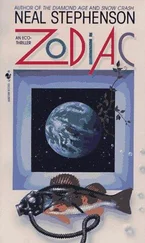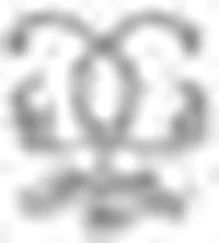The shift in Moiran eye color was obvious and easily documented, but the same thing, mutatis mutandis, had happened with scores of other phenotypes among all the races. Selective mating had the power to wreak impressive changes over time, without any artificial meddling. In some cases, though, racial isolates had acquired genetic labs of their own. These had been used for many purposes, usually considered benign. In some cases, they had been used for Enhancement, which meant deliberate genetic manipulation for the purpose of rendering racial characteristics more pronounced — the artificial acceleration of what was happening “naturally” in the way of Caricaturization. Sometimes this led to freaks, monsters, and disasters. But often it worked. And when its results mated within isolated groups, those isolates became more and more pronounced embodiments of their races.
The end result of all this tended to be nonviable populations clearly identifiable as inbred. So, as often as Isolation, Caricaturization, and Enhancement had taken root and run their courses, they had led either to extinction of colonies or to an ameliorative process called Cosmopolitanization, wherein formerly isolated groups had remerged with their long-lost cousins of the same race and bred back in the direction of healthy and sustainable hybridized strains.
Not surprisingly, Cosmopolitanization had flourished as the habitat ring had been formed during the most recent millennium, suddenly creating a vast amount of new living space far more appealing than the cramped, dark tori in which people had been living for the last four thousand years. The isolates, some of whom hadn’t been heard from for centuries, some of whom could not even speak Anglisky (as the Russian-inflected English, now shared by essentially all humans, was called), emerged from their holes and recombined with their extended families in a population explosion the likes of which had not been seen since Old Earth’s twentieth century. Most of the population of most of the races had thus converged on a set of renormalized racial profiles, while preserving a few extreme tribal isolate strains, variously treasured, feared, or persecuted by others of the same race.
Or at least that was how it was in Blue. Red had exhibited the same general trends among its Aïdan mosaic, its hundreds of millions of Camites, and the roughly 80 percent of Julians who had decided to throw in their lot with Red. The current state of affairs between the turnpikes could only be speculated at, since no communication, other than stray signals intelligence and a propaganda channel that most people ignored, had been received from that part of the habitat ring for almost two hundred years.
FOR A FEW MINUTES THE LAST LIGHT OF THE SUN HAD BEEN STRIKING spires, statues, and carved stonework on the fronts of some fantastic old kupols mounted to the seemingly vertical cliff before her: the flank of Capitol Hill. But then suddenly it was near dark. Kath Two turned, accepting the windblast on her right side, and descended the south limb of the bridge. As much as she loved the power of the air, she felt herself scurrying the last few steps to get down into the shelter of the buildings. Capitol Hill was higher than Change Hill and so, rather than debouching into a park, as it did on its north end, the bridge here stabbed into the flank of the slope. Kath Two was plunged directly into a snarl of streets that were but indifferently illuminated by light spilling from occasional doorways and lamps that the owners of some compounds had decided to mount along the tops of their walls. “The streetscape of Bordeaux draped over the topography of Rio de Janeiro” was how the city had been described by its designer, a Julian/Moiran breed who had been born more than four thousand years after both of those cities had been annihilated.
She had a device in her pocket that knew her exact latlong. Those numbers were, of course, useless in a city that was being dragged through the air on the end of a rope. Her reluctance to pull the thing out and look at it, however, went deeper than that. Being here had plunged her into a sort of reverie none the less compelling for being obviously the product of fantasy: namely, that she was walking around in a city on Old Earth. She didn’t want to spoil it until she was well and truly lost. So she let her feet take her through the red stone streets, trying to go uphill as much as she went downhill, using the towers of great old kupols as landmarks, when unsure of herself circling back toward the abutment of the bridge. For she had been told that the meeting place was not far from the bridge. She might have asked for directions, but the temperature had dropped, the glittering arc of the habitat ring had been obscured by high clouds, and it had begun to rain, a hissing curtain of small, warm drops. Pedestrians had all disappeared into wherever it was they knew to go. She’d been warned that Capitol Hill was deserted after dark; this seemed doubly true when a storm was brewing.
Several times she had passed by the front of the same building, or seen it from down the length of a street. For it stood at a place where several ways angled together into a cramped asterisk of wet cobblestones, and so sudden views of it kept jumping into her peripheral vision as she ambled along the nearby alleys. That intersection was there because of a house-sized block of stone that jutted from the hillside and forced all the nearby streets to stretch around it. The stone, as she could guess, was a crumb of the moon’s mantle that had become embedded in its iron core. It might have been in there for a billion years, or it might have been a loose bolide that had slammed into red-hot Peach Pit shortly after Zero and gotten stuck in the congealing metal. Cleft and its siblings had many of those. They were usually treated as impurities in the melt. This one had been left in situ, presenting a rugged gray face to the streets that wrapped around it. Atop it, ten meters above street level, someone had constructed a round stone tower. Fanning out behind, like a ship’s hull behind its jutting prow, was a triangular building that she could guess had a nice compound in its center.
The third or fourth time Kath Two saw this tower it was from a distance of perhaps a hundred meters. She was gazing at it straight down one of those narrow streets. On its upper story it had a row of arched windows, looking out in all directions. Warm light was shining out of those windows, and she could see people sitting at tables, drinking and talking and eating and reading. All of those activities sounded good to her, and she entertained a hope that it might be some kind of public house — not a private club.
The entrance was not obvious, but she found it around to the right side, where a mousehole had been cut into the metal matrix in which the rock was embedded. The tunnel angled upward and curled around, becoming a spiral stair partly obstructed by rusticles the size of small trees. Actual candles burned in niches. One turn of the helix took her out of the metal and into the stone; two took her to an arch-topped door of real wood, unmarked except for a wrought-metal door knocker in the shape of a bird with a heavy curved beak. Hand-forged feathers of black iron and palladium made it grizzled. Through the door she could feel warmth and hear conversation.
She reached for the knocker, unsure yet whether the place was meant to be public or private. Then suddenly she was conscious of the scrap of paper in her hand. She stretched it out under the light of the nearest candle.
THE CROW’S NEST
SOUTH CRADLE
She pushed the door open and entered. The first thing that came into her view was a semicircular bar of old copper, a row of tap handles, a window behind looking into a busy kitchen. Music came out of a back room, not so loud as to interfere with conversation, but enough to make her nod her head slightly with its beat. She didn’t recognize the style, but she knew the type: something that had been cooked up by people isolated in a mining colony or an early habitat, people who knew how to dance.
Читать дальше
Конец ознакомительного отрывка
Купить книгу





